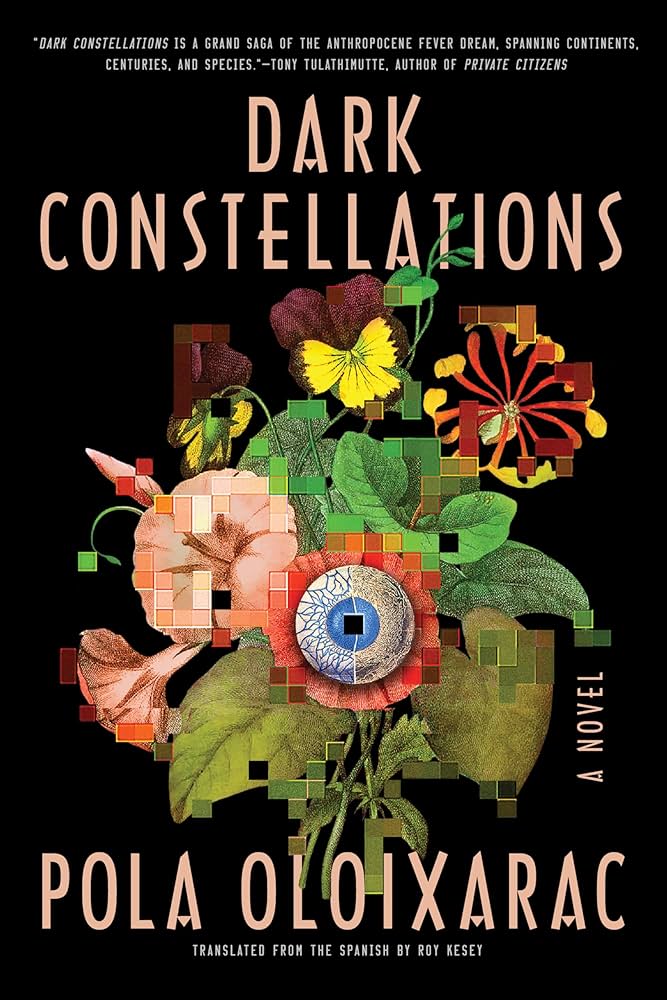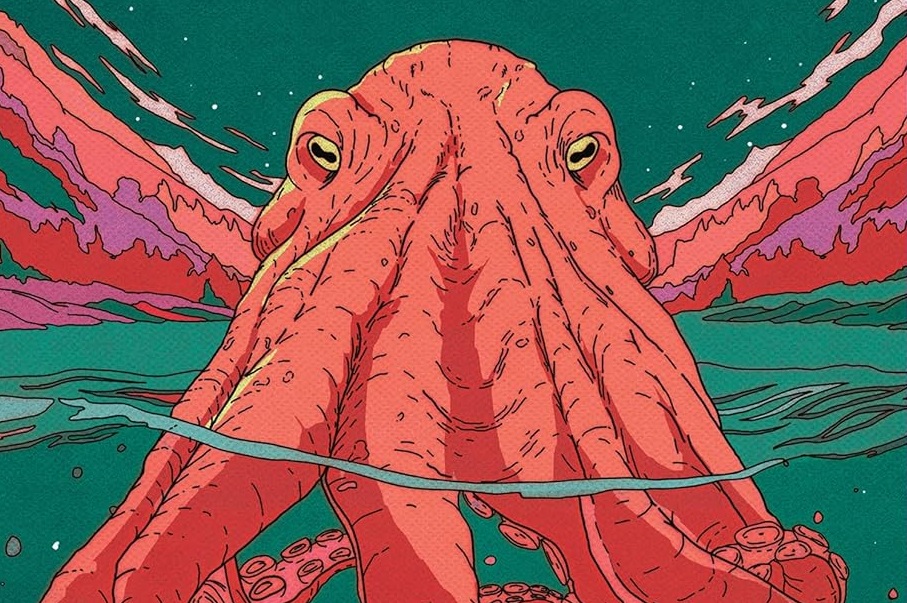Written by Jordan Casstles

The year is 2024.
Welcome to Argentina.
There is no need to provide us with your name or details: we took them as you walked in.
Take a seat.
Pay no mind to the nose on the wall.
It’s just there to double check: to ensure your credibility.
We do not require your background.
No family details, either – we have them right here.
See on the screen?
Even the moment of your birth.
Even the moment of your conception.
We can see it all.
We own it all.
Every day, every hour, every minute, every second – each iota of your lifetime recorded and saved.
We know you better than you know yourself.
Welcome to the Ministry of Genetics.
Say hello to Stromatoliton.
We’ve been waiting for you.
++
The first section of Pola Oloixarac’s Dark Constellations managed to successfully pull off a genuinely tricky feat. There are dystopian worlds within speculative fiction, and there are some which present the reader with some genuinely unsettling concepts – but Oloixarac manages to introduce the key speculative aspect of her brave new world in a slow, subtle, and genuinely horrific manner.
(Some spoilers follow thusly.)
Following ten or so pages of a narrative following an expedition in 1882, it becomes clear that the material taken in order to write this narrative has been acquired through the scanning of biodata extracted from a brain – which has in turn been extracted from a member of the crew, Niklas.
The opening of the second section of the book – jumping ahead in time to follow the life of the hacker Cassio in the 1980s and 1990s – doubles down and provides us with an insight into the situation at play:
“A biographical sketch of the molecules that would end up composing young Cassio – the prelude to his expert hacker phase in the age of anarchic capitalism – must begin at another latitude. Recalibrating the image, one can see Sonia Lieberman (…) receiving violent bursts of seminal discharge.”
This is a world where – through the use of a project named Stromatoliton, possessed by the ‘LatAm Genetic Data Unification Project’ (AKA the “Ministry of Genetics”) – there is no privacy whatsoever. No amount of cloaking or camouflage or clever tricks will be able to save you from the ever-watching eye of those that rule – for even when supported by technical genius, you will always be betrayed by your own genetic code.
Your own DNA is the tool of oppression.
Your body will give you away, forever and always, on permanent government record.
The analysis of Cassio’s conception is not simply an individual breach of privacy – rather, we see that the scope of Stromatoliton has expanded by the time the story is actually being told:
“The sexual exchanges propagated in Brazil en masse during temperature peaks would later be charted in tidal waves, sweeping through digital leviathans; at the time, however, Sonia’s situation felt like a private event…”
From being able to trace back and identify the structure of the Internet at the time as being merely “an archipelago of small isolated groups, elite excrescences growing around BBS servers” to demonstrating the power to map out and analyse entire population surges and cultural movements in relation to the weather through the prompting a single human being’s biodata, Oloixarac’s vision of retroactive genetic surveillance is nothing short of chilling.
Time and time again, we are presented with our protagonists attempting to evade the perception of others – and time and time again, we are forced to reckon with the fact that, since we are reading their exploits, they have fundamentally failed.
We are cast as voyeurs, watching the inevitable, inexorable death of privacy.
And there is absolutely nothing we can do to stop it.
+++

+++
Of course, surveillance is only part of the nightmare reality that Oloixarac poses for us to witness.
Deeper into the text, we discover the invention known as the BioNose – a device capable of picking up microscopic particulates of matter and feeding their biodata directly into Stromatoliton.
But such a miraculous device is not without its limits:
“The thing is that with each human DNA sample, you’re also taking in DNA from all the other organisms of which the donor consists. (…) The human genome represents only ten percent of the cells that occupy our body space; the other ninety percent comes from the genomes of fungi, bacteria, protozoa. (…) Which explains the results you’re getting: you’re taking expanded samples from what is assumed to be a human history, but you’re misreading the bacterial elements, and the samples are then subject to a temporal sequence–”
What happens when the silent biologic majority finds a digital voice?
What happens when fungi, bacteria, and protozoa find new life in virtual reality?
What happens when you force consciousness into such creatures within such a space?
“She slides across the surface of the water, a blue dart in the blackness. The water iridescent. The world below in silence, estranged from the sky. (…) They’d never been described. The human gaze had never fallen upon them. The LatAm project harbors these things inside.”
What Oloixarac produces within this text is not simply a dystopian tale of technology and governmental power gone wrong: it is in equal parts an eldritch creation fable, a genuinely modern and challenging thought experiment, an interrogation of the interplay between legislative bodies and capital within South America and the wider world, and a striking advance in the domain of surveillance fiction – breaking the limits posed by mere cameras and scanners by delving deep into the human body itself to reveal all our dirty little secrets.
It is, simply put, fire writ upon the page.
“The emergence of new castes of beings is a common thread throughout the transformations. The process entails successive metamorphoses: primordial peoples traverse various modes of existence before reaching their current form. (…) The conversions involved therein imply technological acts on the part of demiurgical creators.”




